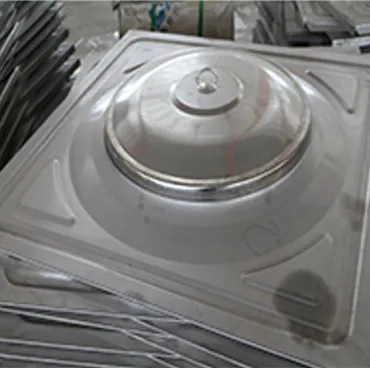loading...
- No. 9, Xingyuan South Street, Dongwaihuan Road, Zaoqiang County, Hengshui, Hebei, China
- admin@zjcomposites.com
- +86 15097380338
- Welcome to visit our website!
Understanding the Functionality of Well Water Pressure Tanks for Home Use
Understanding Well Water Pressure Tanks A Comprehensive Guide
Well water pressure tanks play a crucial role in ensuring a consistent and reliable supply of water to homes and businesses that rely on groundwater. These tanks are integral parts of many plumbing systems, especially in rural areas where municipal water supply is not available. Understanding how these systems operate, their components, and maintenance requirements can help homeowners optimize their water usage and prolong the life of their systems.
What is a Well Water Pressure Tank?
A well water pressure tank, also known as a pressure vessel, is a container that holds water under pressure. It works in conjunction with a submersible or jet pump to draw water from the well and distribute it through the plumbing system of a building. The tank maintains pressure in the water system, ensuring that when a faucet is turned on, water flows immediately without delays.
Components of a Well Water Pressure Tank
1. Tank Body Made from steel or fiberglass, the tank holds water and has an air-filled bladder or diaphragm that separates the water from air. This design helps maintain pressure levels within the tank.
2. Air Chamber The top portion of the tank contains air, which gets compressed as water fills the tank. This pressurized air pushes the water out when it is needed.
3. Pressure Switch This device controls the operation of the pump and ensures that the pressure within the tank stays within a specified range. When the pressure drops to a predetermined level, the switch activates the pump to refill the tank.
4. Inlet and Outlet Ports These are the connections through which water flows into and out of the tank. The inlet is connected to the pump, while the outlet leads to the plumbing system of the home.
How Do Well Water Pressure Tanks Work?
When water is drawn from the well, the pump fills the pressure tank, compressing the air in the upper chamber. Once the tank reaches a set pressure—typically between 40 to 60 psi—the pressure switch turns off the pump, preventing overfilling. When a faucet is opened, the pressurized air pushes the water out of the tank, delivering water to the plumbing system. The process repeats as necessary, maintaining consistent water pressure.
Benefits of Well Water Pressure Tanks
well water pressure tank

1. Consistent Water Pressure By maintaining pressure in the system, these tanks provide a steady flow of water, improving the experience for users.
2. Energy Efficiency A well-designed pressure tank reduces the frequency of the pump cycling, leading to lower energy consumption and extended pump life.
3. Reduced Wear and Tear By buffering the flow of water, pressure tanks can protect the plumbing system from sudden pressure fluctuations that might cause leaks or damage.
Maintenance of Well Water Pressure Tanks
To ensure optimal performance, regular maintenance of the pressure tank is necessary. Here are a few key maintenance tips
- Check the Pressure Periodically inspect the pressure in the tank with a pressure gauge. Adjust the air pressure if it falls below the recommended levels, usually around 2 psi below the cut-in setting of the pressure switch.
- Monitor for Signs of Corrosion or Damage Inspect the tank for any signs of rust, leaks, or bulging. If any issues are detected, contact a professional for repairs or replacement.
- Inspect the Bladder If the tank is a bladder type, the bladder may wear out over time. A failed bladder can lead to water mixing with air, reducing efficiency. In such cases, it may be necessary to replace the tank.
- Regular Pump Maintenance Since the pressure tank works in tandem with the pump, ensure that the pump is also maintained to prevent issues related to insufficient water supply.
Conclusion
Well water pressure tanks are essential for maintaining a reliable water supply in areas that depend on groundwater. Understanding their function and components, as well as regular maintenance, can enhance efficiency, save energy, and extend the life of both the tank and the pump. Whether you are a new homeowner with a well system or have been relying on wells for years, familiarizing yourself with these tanks is key to ensuring a steady flow of water in your household.
-
The Rise of FRP Profiles: Strong, Lightweight, and Built to LastNewsJul.14,2025
-
SMC Panel Tanks: A Modern Water Storage Solution for All EnvironmentsNewsJul.14,2025
-
GRP Grating: A Modern Solution for Safe and Durable Access SystemsNewsJul.14,2025
-
Galvanized Steel Water Tanks: Durable, Reliable, and Ready for UseNewsJul.14,2025
-
FRP Mini Mesh Grating: The Safer, Smarter Flooring SolutionNewsJul.14,2025
-
Exploring FRP Vessels: Durable Solutions for Modern Fluid HandlingNewsJul.14,2025
-
GRP Structures: The Future of Lightweight, High-Performance EngineeringNewsJun.20,2025
